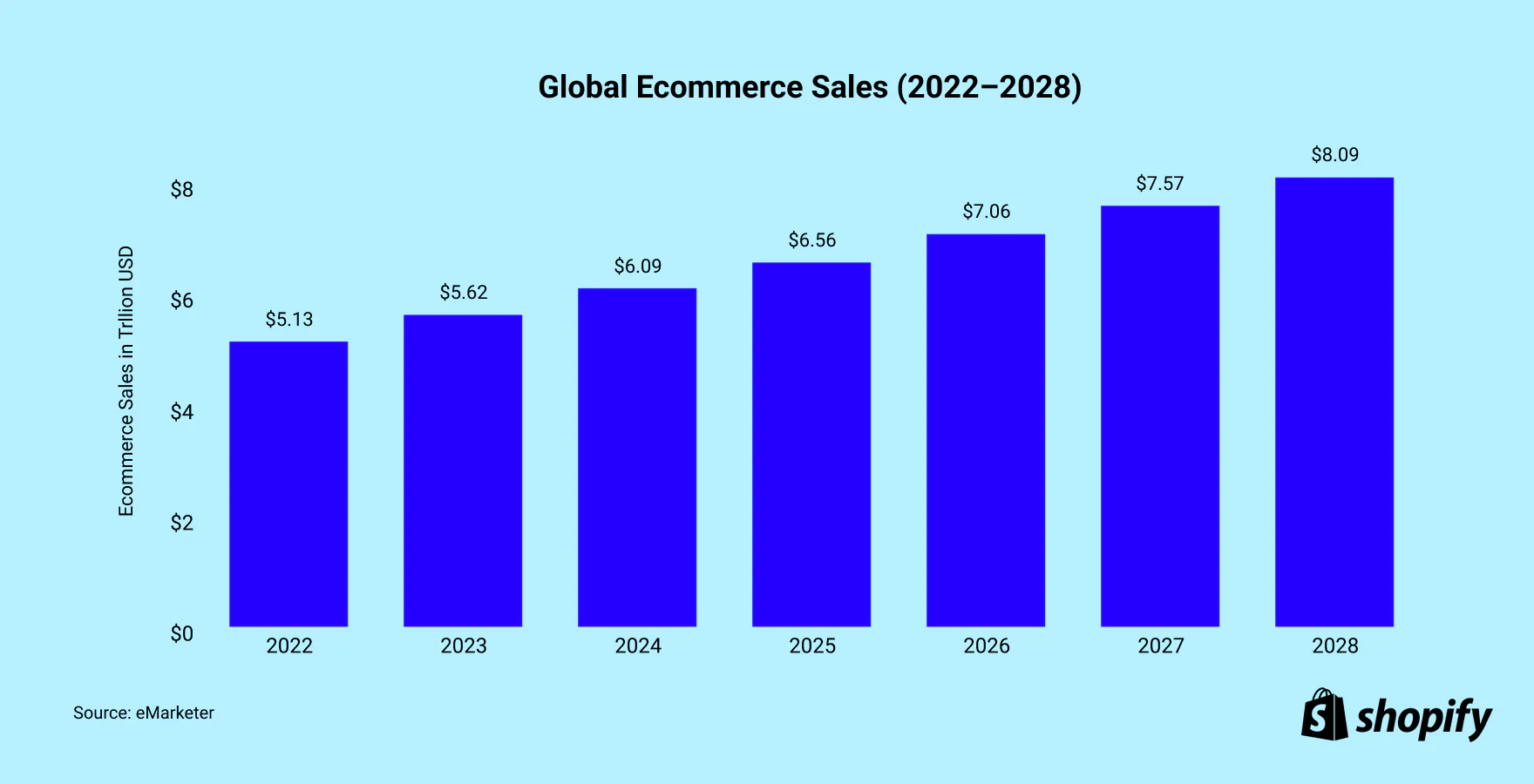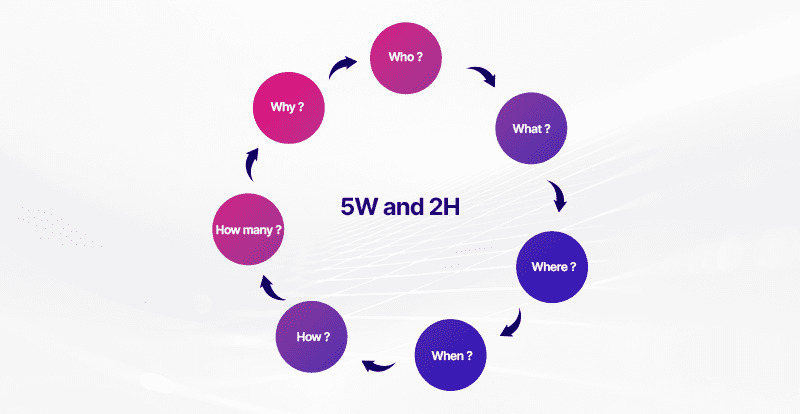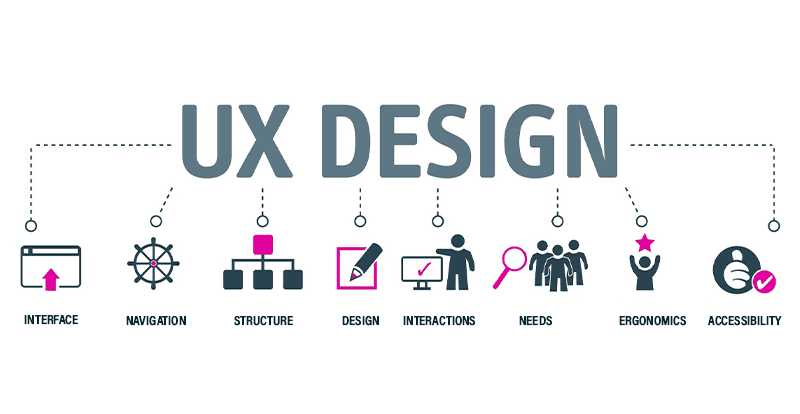Overview
In this article, Eminence explains the factors that have contributed to its success and the benefits you can derive from it for your business. We will also outline the steps and points to consider when developing your m-commerce offering. Finally, we will highlight the commercial and marketing trends you should adopt to maximise your sales.
What is m-commerce (mobile commerce) ?
M-commerce or mobile commerce refers to purchases and sales made using wireless technologies and applications linked to mobile devices, such as our smartphones. The term first appeared in 2012.
M-commerce is therefore a sub-segment of e-commerce, which represents all transactions made on the Internet. It is also an important area of m commerce in mobile computing.
Key figures for mobile commerce
According to Hootsuite & We Are Social, at the end of 2024, mobile devices accounted for approximately 60% of global Internet traffic, compared to 38% for desktop computers. In addition, more than 96% of Internet users connect via a mobile phone, representing approximately 5.2 billion people. With this high level of equipment penetration, online commerce revenue continues to grow in 2024:
- £6.3 trillion: this is the global revenue from e-commerce, which continues to grow rapidly according to Statista. It is even expected to peak at £7.5 trillion in 2025!
- £1.7 trillion: this is the value of sales made via m-commerce in 2024, with a projection of £2.1 trillion in 2025 according to the Global Strategic Business Report.
In Switzerland, e-commerce reached a turnover of CHF 14.9 billion in 2024, representing growth of +3.5% compared to 2023. Of these purchases, approximately CHF 12.3 billion were ordered from local websites, while CHF 2.6 billion were ordered from foreign websites, attracting consumers with their (relatively low) prices, availability or choice, with an 18% increase in purchases from abroad.
By comparison, in France, e-commerce reached £175.3 billion in 2024, up 9.6% year-on-year, according to Fevad. Product sales rebounded by 6% to €66.9 billion, while service sales grew by 12% to €108.4 billion. The total volume of transactions rose to 2.6 billion, with an average basket value stable at €68.
It should also be noted that the second-hand market continued to grow in France: in 2023, 45% of online shoppers bought at least one second-hand product during the year, mainly for economic reasons but also for environmental and sustainability reasons.
Heavy online shoppers are made up of Generation Y internet users (born between 1984 and 1990), as they alone represent 20% of online shoppers and account for two-thirds of sales in France.

Factors favouring M-commerce
Buying online has become as common as shopping in a store. All sectors of activity are now involved, whether it be cars, beauty products, textiles, insurance or even your meals.
There are many reasons for the success of online sales:
- Convenience: you can order from wherever you want, at any time, and have it delivered to the location of your choice.
- Speed: a few clicks are all it takes, no need to travel, saving time for 3 out of 4 shoppers.
- Diversity of choice: a huge selection in an international catalogue, whether new or second-hand, with customer reviews providing reassurance.
- Prices and ease of comparison between websites and physical stores; an even more important criterion in times of inflation. Frequent promotions encourage purchases.
- Transaction security.
- Enhanced and high-quality services: free returns, fast delivery with different options, chatbots, payment in instalments, guarantees, after-sales service, etc.
These advantages are common across different m commerce types
Why should you embark on m-commerce?
Are you wondering whether you should develop your m-commerce business to reach mobile phone users? Here are all the good reasons why you should get started and the benefits you could reap:
- A wider catchment area and a tenfold increase in the audience you can reach.
- The ability to make sales 24/7.
- Improved customer satisfaction thanks to instant gratification.
- Collecting data from your buyers will allow you to build relationships with your customers and increase their loyalty.
- Receptive potential customers: mobile phones are the preferred source of information for obtaining details about a product or service. A practical example of mobile commerce is in-app purchases through retail apps.
Points of vigilance when embarking on M-Commerce
Embarking on an e-commerce strategy involves a series of decisions to be made and: researching, analysing, designing, testing and deploying, which can be referred to as mobile thinking.
What are the steps involved in setting up mobile commerce?
Step 1. Identify your needs and define your strategy
Before launching into m-commerce, you need to ask yourself all the questions surrounding your projects and affecting all areas of your business. We can offer you a non-exhaustive list to help you in your thinking, based on the 5W & 2H method:
WHO?
• Who are your targets, your personas? Are you meeting a need?
- Who are your suppliers, your intermediaries (delivery, bank, marketplaces)?
- Who are your service providers for IT development, design and communication?
- What is your team, what roles do you need to fill and how many people do you plan to recruit in line with your ambitions?
WHAT?
• Where will you be based? Where will your storage facility be located?
- Will you sell your products and services exclusively on your website or app, or also on marketplaces and in physical locations?
- Are your ambitions local, national or international?
WHEN?
- When do you want to start? What is your roadmap?
- Is your business permanent, occasional or seasonal with peaks?
HOW?
- How will you handle sourcing, order preparation, delivery and returns, and after-sales service?
- What tools and software do you need for your accounting, real-time inventory management, etc.?
- How will you promote your business? What is your communication strategy?
HOW MUCH?
- What budget should you plan for developing your website or app? For financing the business?
- How much can you invest or will you need to borrow?
- How much will it cost to organise upstream and downstream logistics?
- What is your break-even point? How many products or services will you need to sell to reach it?
- Is this business viable?
WHY?
- What motivates you?
- Is it an additional sales method?
- What are your short-, medium- and long-term ambitions?

Step 2. Choosing the right support to develop
When considering mobile commerce development, businesses must choose the right platform.There are several options available, each with its own advantages and disadvantages:
- Create a dedicated mobile app:: its usefulness depends on your strategy.
Pros: fully adapted to mobile devices, possibility of sending push notifications.
Cons: requires the user to download it, high development budget and must be adapted to both operating systems (Android and iOS).
- Develop a mobile version of your website, specifically designed for smartphones.
Pros: optimised browsing experience, development can be done at a later stage.
Cons: high cost, as it incurs additional development and maintenance costs
- Design your e-commerce website to be responsive and ‘mobile first’, automatically adapting to the screen size of smartphones or tablets
Pros +: reduced cost as only one development is necessary, time savings, search engine optimisation
Cons-: requires forward planning, as the decision must be made before the website is created, otherwise the content may not be optimised for mobile use
Your decision will therefore depend on your financial and technical resources, but also on your long-term business objectives. Your stage of development will also be a decisive factor, for example if you already have an e-commerce site.
Step 3. Imagine the user journey : the customer journey
Put yourself in the shoes of your future users to trace their journey through the sales funnel, in order to create an experience map specific to each of your personas:
- list all the steps the user must go through,
- assess the emotions during the customer journey,
- identify possible pain points at each stage,
- determine the solutions and optimisations you can implement to remedy them.
This step is crucial and essential to encourage users to make a purchase. The aim is to avoid bounce rates or abandoned baskets due to frustrations that could have been identified and corrected upstream. Among the main reasons for cart abandonment in the UK are excessive delivery costs (48%), postponement of purchase due to a lack of urgency (19%), technical difficulties or excessive complexity (18%), and the absence of certain payment methods (22%).
Analysing the user journey will also save you a significant amount of time when designing your m-commerce site or mobile app and its various pages, by incorporating all the essential elements for:
- navigation: breadcrumb trail, back button, menu, access to shopping cart, search function,
- design and interface, which must take your target audience into account,
- reassurance: clarity of terms and conditions of sale, display of guarantees, help, after-sales service, contact details, chatbox, customer reviews, etc.
Step 4. Design and UX/UI Design: the principle of mobile thinking
Nearly 9 out of 10 people believe that their mobile shopping experience could be better. The main reasons for dissatisfaction are related to text and links being too small, as well as security issues.
Internet users would also like more information about items, the ability to compare products and access customer reviews to help them or reassure them in their purchasing decisions.
What are the basic rules that apply to any mobile website aimed at m-commerce?
- Accessibility: a simple interface and clean design for greater clarity and a more comfortable experience, text size and format, and appropriate contrast to facilitate readability.
- Ergonomics: easy navigation, intuitive and short paths, buttons accessible with the thumb, sufficient space between clickable elements, search filters
- Speed: fast download speed, especially if the user has a limited network
- Forms: favour pre-filled forms, whether for account creation or payment methods
- Services: display them on the product page, such as warranties and delivery cost.These reflect the fundamental principles of m commerce.
- Delivery: geolocation to offer different delivery options nearby (to home or chosen location, click and collect, pick-up point).

Step 5. Test before deploying !
Finally, before going live, have your mobile commerce site or M-Commerce app tested by average users. This will allow you to identify any issues that need to be improved.
Be sure to carry out these tests regularly during the design phase of your site so that you don't have to redo everything at the end!
Subscribe to our newsletter and gain access to strategic insights, exclusive analyses, and expert tips to enhance your online presence.
What are the trends to consider for your M-Mobile Website
Here is a mobile commerce overview of the latest digital trends : New practices have emerged in recent years and are worth incorporating into your responsive website or mobile commerce app design, as well as into your communications to boost sales.
Here is a brief overview of digital trends in mobile commerce.
Artificial Intelligence
Artificial intelligence (AI) is currently booming and regularly makes headlines in the digital world. In the context of m-commerce, AI stands out through various uses:
- It records consumer preferences based on their purchases and interests, anticipates their needs and makes purchasing recommendations.
- It allows chatbots to be integrated into your website to create a discussion space focused on the most frequently asked questions, thereby improving the customer experience.
- It is effective in content creation, such as generating product sheets, translating them or writing SEO-optimised texts, promoting your positioning in organic search results.
The video
Video content should not be overlooked and should feature on your product pages or social media. Shoppers prefer to watch a video rather than read a description. It's no coincidence that tutorials are so popular!
Did you know that nearly two-thirds of internet users have placed an order after watching a video about the brand? (Source: Tubular Insights)
Live shopping
Initiated by Alibaba, live shopping consists of a live demonstration of a product, usually taking place in chat rooms. This allows internet users to better imagine themselves with the desired item by seeing it in a real-life situation, similar to teleshopping on our television screens.
It is estimated that there are 50,000 live shopping sessions per day! This is a real craze, as 265 million users are fans of this method of online shopping.
Social shopping
Social shopping involves promoting products on the social networks favoured by the target audience. The impact of the community and the presence of ambassadors are important for brand loyalty and establishing a relationship of trust with the brand.
Influencers are often used to promote products, for example through unboxing, a practice that involves unpacking a product live.
Social networks such as Facebook and Pinterest offer a shopping feature, while Instagram suggests posts for purchase, allowing you to create a direct link to your online store.
Voice shopping
Voice shopping is still a fledgling trend, but one that is likely to gain traction and grow in the near future.
Voice technology has been around for several years and allows users to perform searches using virtual assistants such as Amazon Alexa, Siri and Google Assistant, among others. Its scope now extends to shopping, allowing users to browse catalogues, place orders and interact with new platforms integrated into social e-commerce, such as TikTok Shop and Instagram Shopping, which are revolutionising the user experience by combining content and direct purchasing.
At the same time, Progressive Web Apps (PWAs) are gaining ground by offering smooth and fast shopping experiences, accessible directly from a browser, without the need for installation, and compatible with voice interfaces, thus opening up new opportunities for voice shopping.
Marketplace sales
Online sales platforms, commonly known as marketplaces, have exploded in 2021 as a result of Covid-19.
35% of leading e-commerce websites sell their products on marketplaces, due to the high visibility they offer, higher conversion rates and additional services provided to customers. Two-thirds of them generate around 10% of their turnover through this channel. Marketplaces are also increasingly relevant in mobile commerce for B2B transactions.
Conclusion
As you can see, mobile commerce has become essential in any e-commerce activity, as it represents the future of e-commerce. You should therefore integrate it as soon as possible into your current or future website developments in order to boost your revenue growth.
The teams at Eminence are at your disposal to discuss your commercial objectives and offer you web and mobile solutions to achieve them and develop m-commerce applications.
FAQ
What is m-commerce?
M-commerce, or mobile commerce, refers to all purchases, sales and payments made via mobile devices such as smartphones and tablets. It allows users to carry out transactions wherever they are, through mobile-optimised apps or websites, often taking advantage of features such as geolocation or contactless payment.
What are the advantages of mobile UX?
A good mobile UX (mobile user experience) offers smooth, fast and intuitive navigation, adapted to touch screens and mobile use. It facilitates access to information, improves user comfort and reduces frustration, which promotes user satisfaction, increases conversion rates and strengthens brand loyalty.







